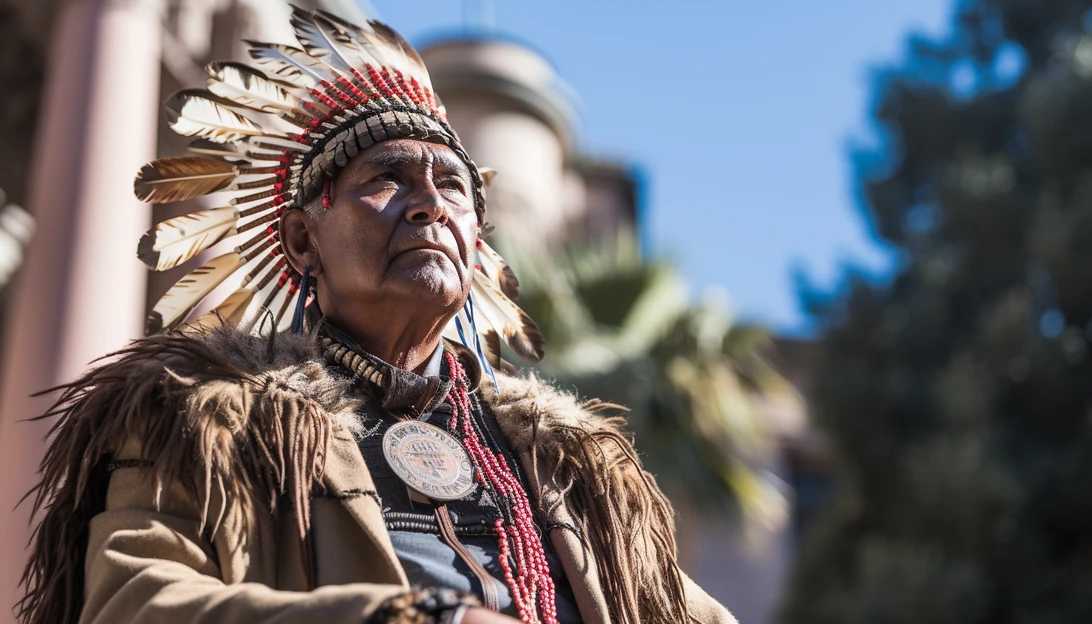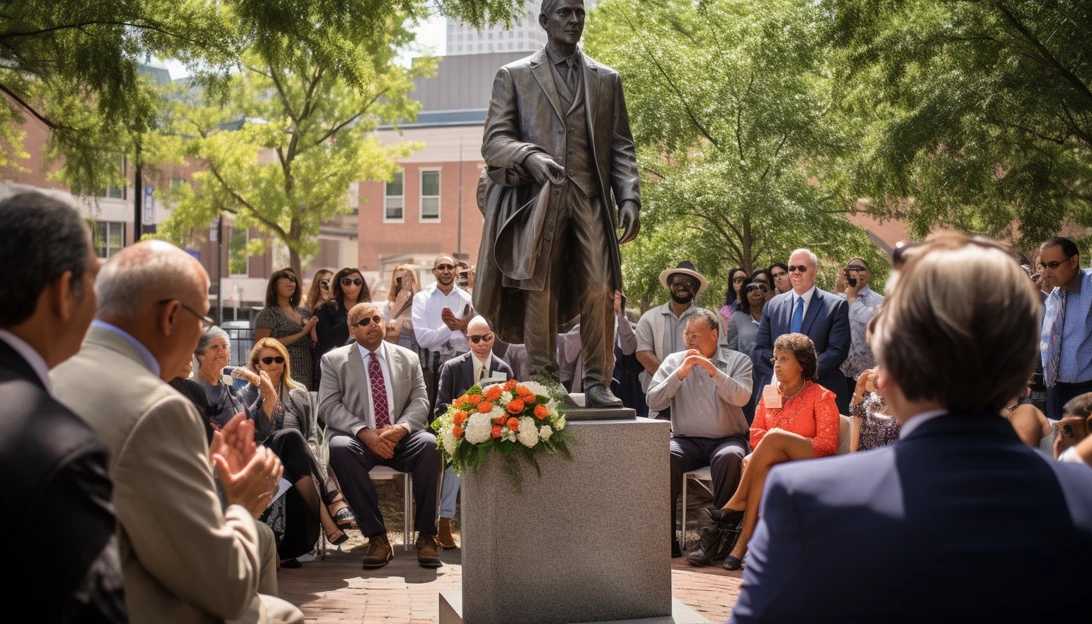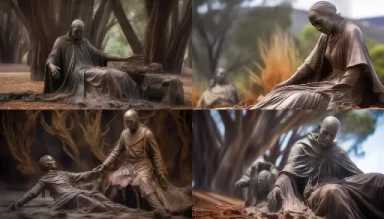Religion
published : 2023-11-08
Statue of Native American Leader Rises to Replace Toppled Monument in California
The new statue replaces a monument of St. Junípero Serra, an 18th-century Spanish missionary

A new chapter in California's history has been written as a statue of a revered Native American leader takes its place outside the state Capitol building.
Replacing the toppled monument of St. Junípero Serra, an 18th-century Spanish Catholic priest and missionary, the eight-foot-tall bronze statue now stands as a symbol of recognition for the Native American tribes whose ancestral lands encompass the state Capitol.
Depicting the esteemed Miwok leader, William J. Franklin Sr., the statue serves as a tribute to his unwavering fight to preserve the cultural heritage of the Miwok people.
At a grand ceremony held at Capitol Park in Sacramento, around 400 individuals, including lawmakers, tribal leaders, and descendants of Franklin, gathered to witness this historic moment.
Assembly member James C. Ramos, the first Native American in the state legislature, expressed the profound significance of the new statue, stating, 'Finally, the California Indian people will have a monument here on the Capitol grounds for all those visiting to know that we are still here.'
The unveiling of Franklin's statue holds a deeper meaning, honoring the resilience of Native American elders and ancestors who have fought to preserve their identity.
The new statue rises in place of the decades-old monument of St. Junípero Serra, a Catholic missionary who played a vital role in establishing Spanish missions in California during the Spanish colonization of Alta California.

Serra's canonization by Pope Francis in 2015 further cemented his historical significance.
Yet, the repercussions of Serra's actions came under scrutiny in 2020 when racial justice protests erupted across the nation following the tragic death of George Floyd.
As part of a larger movement to reassess the legacies of historic figures, Serra's monument was torn down by protesters who claimed that his presence contributed to the destruction of Native American tribes and cultures.
This event mirrored similar incidents where statues of controversial historical figures, such as Confederate Gen. Robert E. Lee, were also targeted and removed.
The replacement of Serra's monument by a statue of Franklin represents a turning point in acknowledging the history and heritage of Native American communities.
California lawmakers, in recent years, have taken steps to recognize the state's violent legacy against Native Americans.
In 2019, Governor Gavin Newsom issued a formal apology for the state's historical violence and genocide against Native Americans.

Moreover, Newsom signed laws promoting the teaching of Native American history in schools and eliminating derogatory slurs from various sites across the state.
Jesus Tarango, chair of the Wilton Rancheria tribe and a key proponent of the bill that led to the monument's construction, emphasized that the goal was not to erase history but to redirect the narrative towards honoring the original stewards of the land.
Andrew Franklin, grandson of William J. Franklin Sr., expressed the profound impact of the monument, stating, 'We've always grown up holding our culture very high in regard and respecting each other, respecting our culture. That was always huge for us, this is just very surreal.'
The unveiling of the statue of William J. Franklin Sr. signifies a new era at the California state Capitol, not just for Native Americans but for all who visit and learn about the rich tapestry of the state's history.
It serves as a powerful reminder of the resilience and strength of Native American communities, and their enduring presence in the land they have called home for generations.
